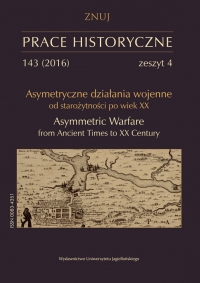Tożsamość Ormian w Galicji
Identity of Armenians in Galcia
Author(s): Krzysztof StopkaSubject(s): Ethnohistory, Modern Age, Migration Studies, Politics and Identity, Identity of Collectives
Published by: Wydawnictwo Uniwersytetu Jagiellońskiego
Keywords: Galicia; Armenians; national identity;
Summary/Abstract: The Armenians living in Galicia formed an ethnic identity which consisted of a few thousand members, distinguished by the liturgical rite, historical tradition and close family and social relationships. The earliest waves of migration arrived at Lwów and Kamieniec Podolski from the Tatar lands, speaking the Kipchak dialect of the Turkic language group. That ethnolect fell into disuse in the 1660s. The more recent migration groups which came to Poland on the turn of the 16th and 17th century, especially those which arrived in the beginning of the 17th century, spoke various dialects of the modern Armenian language. The usage of this language, however, began to fade on the turn of the 18th and 19th century. The Armenian community was dwindling away without further waves of migration. In this situation, the Armenians were undergoing a linguistic Polonisation and, on a lesser scale, Ruthenisation. They quickly assimilated with the Polish community, belonging to the highest social strata such as the intelligentsia and land owners. During the Spring of Nations, the relationship between Polish and Armenian identity was widely discussed. The most frequent opinion held the Armenian people to be a “tribe” of the Polish nation. The 1860s saw a journalistic dispute on the group’s identity. The anonymous author of Głos do ziomków obrządku ormiańskokatolickiego (Call to fellow followers of the Armenian Catholic rite) made a call to abandon the separate rite and unite with the Poles as one nation. Answering this, Izaak Isakowicz (the future Armenian archbishop of Lwów) fervently defended the Armenian rite and traditions. He did not hold the notion that they were a cause of division among the Polish nation, because the Armenians living in Galicia identified with the Polish reason of state and the Armenian culture enriched the Polish culture. In the 1880s, the Armenian land owner Robert Rosco-Bogdanowicz called his fellow Armenians to defy Polonisation, restore the Armenian language, migrate to the Russian Armenia and propagate Western culture, including Catholicism, in that country. Although the Galician Armenians leaned towards assimilation into Polish culture, the disputes on identity led to the rebirth of the Armenian rite and many initiatives to revive the withering ethnicity. A major role in this process was played by Józef Teodorowicz, the last Armenian-Catholic archbishop of Lwów, who equally identified with Polish and Armenian culture. A popular motto among the Galician Armenians was that “an Armenian is a double Pole.”
Journal: Prace Historyczne
- Issue Year: 144/2017
- Issue No: 2
- Page Range: 335-355
- Page Count: 21
- Language: Polish

